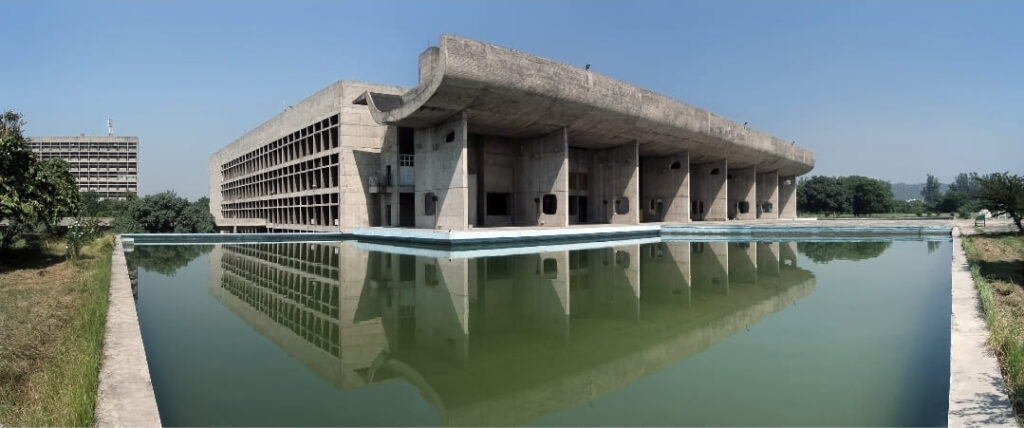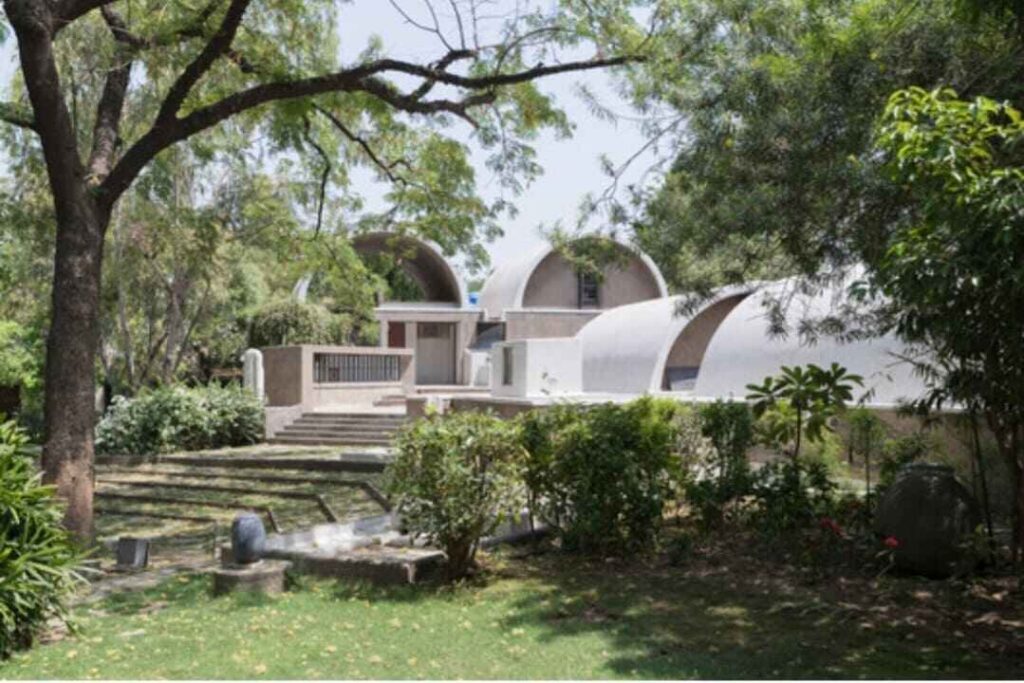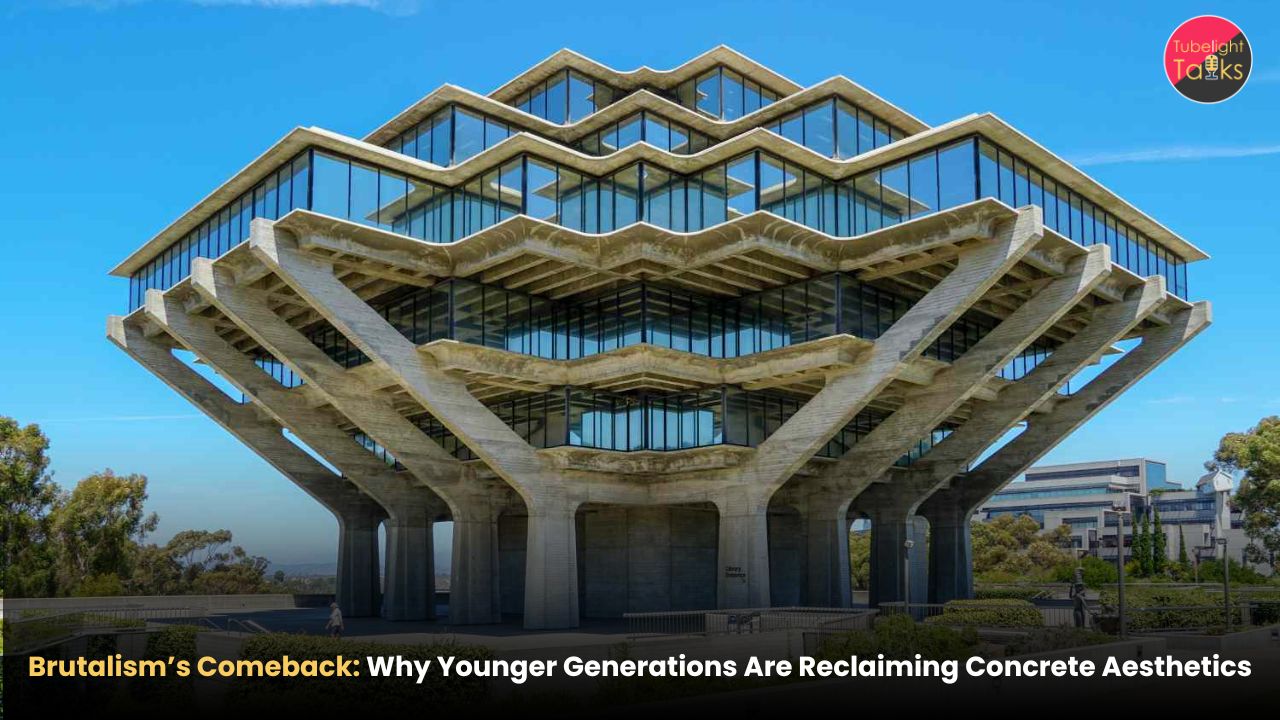Brutalism was once dismissed as cold and lifeless. But it is experiencing a surprising revival today. Younger generations are increasingly drawn to its bold use of concrete, geometric clarity and unapologetic looks. What was once seen as outdated and institutional is now being celebrated in architecture, interior design and even furniture. This article reflects on the renewed interest in brutalism.
What Is Brutalism and Why Is It Returning?
Brutalism emerged in the mid-20th century, defined by raw concrete (béton brut), exposed structures and monumental forms. Its name, often misunderstood as being about ‘brutality’ actually refers to the rawness of material and not brutality.

In the 1970s and 80s, brutalism fell out of favour. It was criticised for being too harsh, bureaucratic and unfriendly-looking. But today, younger designers and urban dwellers see it differently. In an age where glossy finishes and digital perfection dominate, the authenticity of exposed concrete feels refreshing and real to them.
The Appeal of Concrete Aesthetics to Younger Generations
There are many factors about brutalism that appeal to the youth today, namely:
Authenticity
Minimalist and honest in form, brutalism aligns with a generation tired of superficial design trends. The visible structure and unpolished textures reflect a desire for transparency and authenticity in design. Brutalist structures are very raw and real in their looks as they expose the raw material. It’s akin to what is inside is outside.
Sustainability and Longevity
While concrete itself has environmental challenges, brutalist buildings are long-lasting and robust. Many young architects are exploring low-carbon concrete alternatives and adaptive reuse by transforming old structures instead of demolishing them.
Social Media and Visual Culture
Brutalism’s striking geometry makes it highly photogenic. Social media platforms have revived appreciation for monumental structures. This in turn has sparked a renewed interest in heritage preservation and new brutalist-inspired interiors.
Brutalism in Interior Design and Furniture
Brutalism is influencing not just large buildings, but also interior spaces and furniture design. Concrete tables, textured lamps and blocky, geometric seating are gaining popularity. This style feels less austere when paired with warm woods, greenery and textiles. It feels more contemporary. Many cafés, co-working spaces and galleries are using these brutalist touches to create bold yet inviting atmospheres.
Brutalism in India
India has a rich brutalist heritage, with some of the world’s most iconic examples:
- Chandigarh’s Capitol Complex, designed by Le Corbusier, showcases monumental concrete forms. These forms still inspire debate and admiration.

- IIM Ahmedabad, designed by Louis Kahn, integrates brutalist principles with local climatic needs.

- Indian architects such as Balkrishna Doshi and Kuldip Singh used concrete in large-scale projects that balanced monumentality with cultural context.
- In 2018, Balkrishna V Doshi was also awarded the Pritzker Architecture Prize.

Today, Indian architects are reinterpreting brutalism for modern needs. Recent examples include concrete-led mosques, cultural centres, and hospitality projects that combine raw structures with natural light, courtyards, and landscaping. Even restaurants and boutique hotels are embracing washed concrete finishes to achieve a sophisticated yet grounded look.
One such example of Brutalism can be seen in Madhuvilla – The Concrete House by K.N. Associates as prime Architects. It has an area of approximately 20,000 square feet and lies in Vadodara Gujarat. It was recently completed in 2022. The renders, architectural plans and perspective views of the property are available here to have a look at the trend of exposed brutalism.
There are also other structures which have used the concept of exposed concrete primarily for larger strength and more durability. It includes IIT Hyderabad, The Cement House in Juhu Mumbai (1200 square feet and architect Kavan Shah) and many others which are completed recently.
Why Is Brutalist Revival Trending?
The comeback of brutalism is more than a style trend. It reflects more on cultural and social shifts:
- Counter to Consumerism: In an era of fast-changing trends, brutalism’s permanence offers stability and is seen as a striking contrast to consumerism.
- Preservation Movement: Campaigns to protect mid-century modern and brutalist buildings have inspired young architects to see these structures as valuable heritage.
- Climate Adaptation: Adaptive reuse of brutalist buildings avoids demolition waste. This is a big win for sustainability in design.
Challenges of Brutalism’s Comeback
Not all aspects of brutalism are universally celebrated. Despite its striking comeback, brutalism continues to face strong criticism. Its carbon-heavy material, stark facades and monumental scale can sometimes feel intimidating.
Here are some challenges faced by brutalist architecture:
- Environmental Impact of Concrete: Concrete is the backbone of brutalist design and is one of the world’s most energy-intensive building materials. The production of cement contributes heavily to global carbon emissions. This makes brutalism difficult to reconcile with sustainability goals.
- Harshness: For many people, brutalism still symbolises grey, imposing structures that appear cold and unfriendly.
- Maintenance: Raw concrete may look powerful when freshly cast, but over time it is prone to cracks, staining and weathering. Without regular upkeep, brutalist buildings can quickly appear neglected and forlorn.
- Social and Political Associations: In some countries, brutalism became closely linked with state bureaucracy and low-income housing projects that later fell into disrepair. This association created a stigma that still shapes public perception even today.
- Human Comfort Factor: Large, fortress-like structures sometimes ignore the everyday needs of the people like ventilation and natural light. The monotonous interiors also might not particularly look comforting.
- Polarising Public Opinion: Few architectural styles divide opinion as sharply as brutalism. Some celebrate its bold honesty, while others call for demolition. This polarisation makes it difficult to preserve many mid-century landmarks.
Brutalism and the Structures of Spiritual Truth
Brutalism is often admired for its unpolished honesty, without ornament or disguise. In many ways, this architectural philosophy mirrors the sacred spiritual knowledge of Jagatguru Tatvdarshi Sant Rampal Ji Maharaj, Who presents spiritual truth in its purest form – free from ritualistic layers or societal embellishments.
Today, people chase design trends, material progress and fleeting pleasures, yet neglect the unadorned truth that alone can liberate the soul. Sant Rampal Ji Maharaj provides that truth, explaining the ultimate purpose of human life and showing the direct path to Supreme God Kabir. Just as concrete is renowned for its strength and unbreakable base for a structure, the unparalleled spiritual knowledge shared by Sant Rampal Ji Maharaj, backed by our sacred scriptures, is the strongest foundation for a soul’s journey to salvation. Kabir Saheb states:
Kabir, Aur gyan sab gyanadi, Kabir gyan so gyan|
Jaise gola toab ka, Karta chale maidan||
To discover His divine spiritual knowledge in detail, visit the following platforms:
- Website: www.jagatgururampalji.org
- YouTube channel: Sant Rampal Ji Maharaj
- Facebook page: Spiritual Leader Saint Rampal Ji
- ‘X’ handle: @SaintRampalJiM










